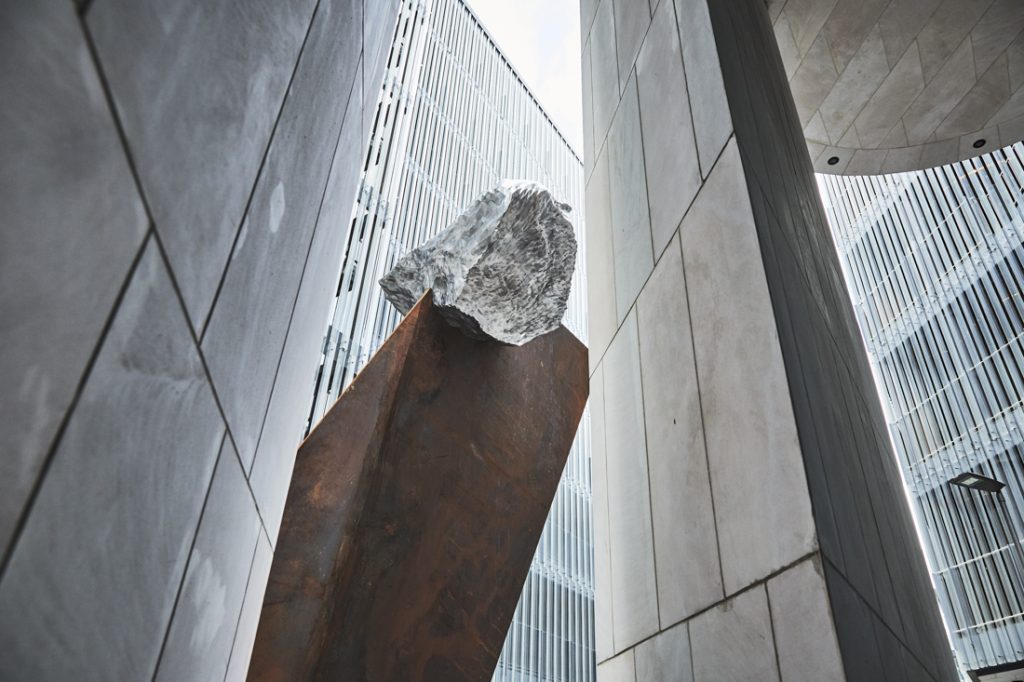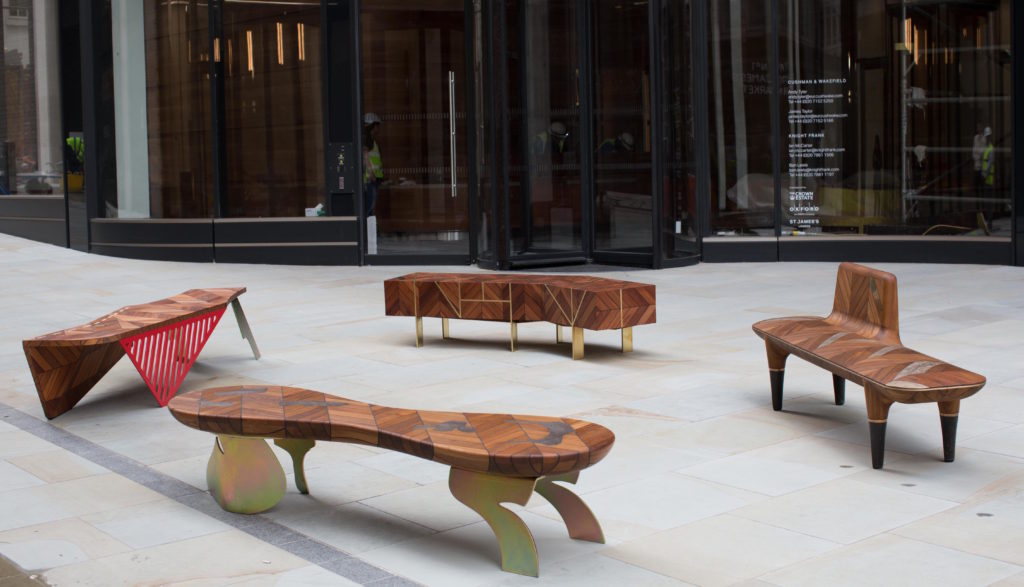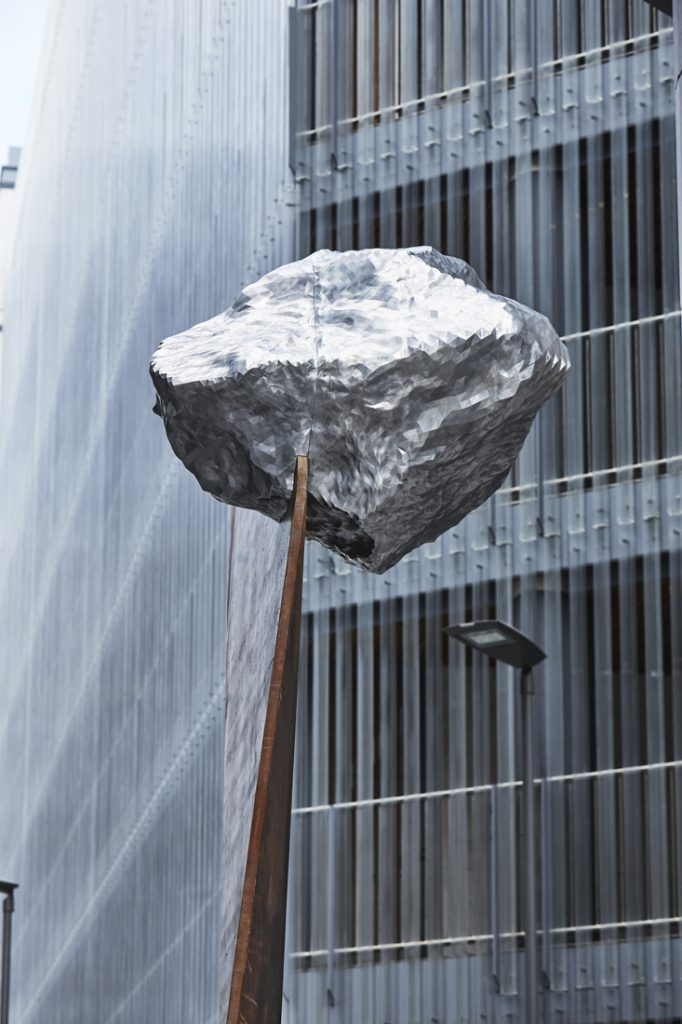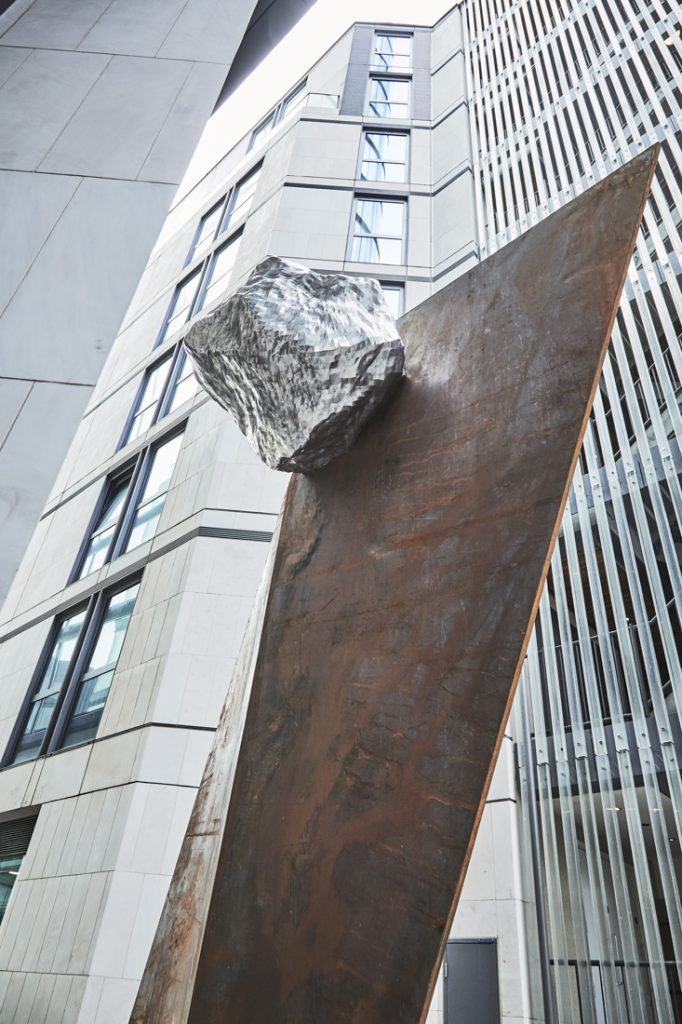Futurecity has worked in partnership with Mount Anvil to curate and deliver a series of public art commissions across three of their new developments in London: Untitled by fine jewellery designer Jo Hayes Ward at Queen’s Wharf (Riverside Studios), Ecliptical Spheres by contemporary artist James Hopkins at Dollar Bay and Column by artist-architect collective Studio Swine at Lexicon, City Road.
Column is the third artwork by Studio Swine curated by Futurecity. In 2016 the collective created a series of public realm furniture Shirt, Tie, Pipe and Shoe at St. James’s Market as part of a wider public art programme commissioned by The Crown Estate, curated by Futurecity. Following this, Futurecity worked with Eden Project in Cornwall and curated the delivery of Studio Swine’s immersive 20-tonne installation ∞ Blue (Infinity Blue) for the centrepiece of the Eden Project’s Invisible World’s 5-year programme.
Read the interview with Studio Swine below.
FC: Can you tell us what it was like working at a different scale and in a new location / context for this commission?
SS: We were really interested in the feeling a built environment gives you, the material fabric of the city, its relation to the human and the symbols represented. The scale isn’t so big, but we wanted to create the sense of monumental through the proportions. When you think of Stonehenge, it’s not big in comparison to the buildings we’re used to, but there’s a sense of weight resting above your head and a feeling for the materials that makes one very aware of the physical ‘thingness’ of it.

FC: How do the materials / fabrication methodologies that you used in this commission compare to your usual practice?
SS: We are really curious about materials and their states of matter. The contrast in the work is from metal in two different composites, one being Corten steel which oxidises in the elements, the other being Aluminium which retains its shine. The Corten takes on a natural warm orange rust that has a rough texture and absorbs light, the aluminium rock is bluish cool grey and reflects the light, the cortex is a folded sheet of ready made industrial metal, the aluminium a cast 3d scan of a rock.
FC: Has your practice / thinking developed as a result of the commission?
SS: We see public space as a stage and the architecture and art as a set that can be suggestive and evocative but whilst forming a silent backdrop to the lives passing though, able to adapt to weather, light and interaction whilst having some subtle effect on the mood and enhancing a sense of place.
FC: Did the commission change your ideas of what you’d like to focus on in the future?
SS: We have been working on projects that can evoke a sense of both the primordial and future manmade landscapes. This commission allowed us to explore ways that public art can create moments that might suggest pockets of these landscapes.
FC: This is your first London permanent public art work, how do you hope it contributes to public art in the city?
SS: We created seating for St James’s Market in Mayfair (read about it here) which we see as a set of one off sculptures. We want to make work that can enhance the sense of place and make the fabric of the city and the experience more interesting.

FC: What can we expect from Studio Swine in the future?
SS: We are continuing to explore what we call ‘ephemeral tech’ which is technology experienced in a sensorial way through real tactile materials like fog, scent, plasma rather than through the normal technology interfaces of LEDs, flatscreens and projections. We are also working on larger scale architectural structures that will contain these immersive worlds within.


